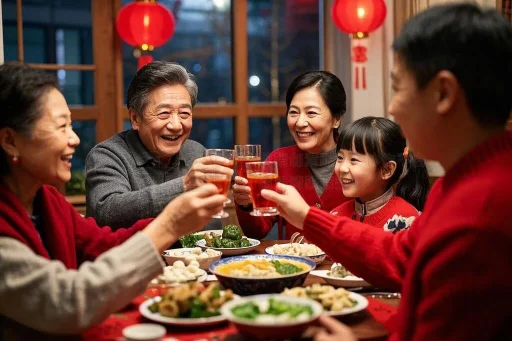Are you ready to take a culinary tour of one of the world’s most diverse and flavorful cuisines? Chinese food offers a kaleidoscope of tastes, textures, and aromas that captivate the senses and warm the soul. With a history that spans thousands of years, Chinese cuisine embodies a sophisticated blend of tradition and innovation.
Whether you’re a seasoned foodie or a curious newcomer, this blog post will guide you through the vibrant world of Chinese foods. From iconic dishes to regional specialties, we’ll explore the health benefits, cultural significance, and where to find authentic Chinese food worldwide. Let’s set the table for an unforgettable gastronomic adventure.
Introduction to Chinese Cuisine
Chinese cuisine is a culinary tradition that dates back over 5,000 years. Its rich history is characterized by a wide variety of ingredients, cooking techniques, and flavors. From the delicate flavors of Cantonese dishes to the bold spices of Sichuan cuisine, Chinese food represents an intricate mosaic of regional styles and cultural influences.
Each region within China has its unique culinary identity, shaped by local ingredients and historical exchanges with neighboring cultures. This diversity is what makes Chinese cuisine so exciting—every dish tells a story of its origin and evolution through time. With globalization bringing Chinese flavors to tables around the world, now is the perfect time to appreciate the depth and complexity of this ancient culinary art form.
Chinese cuisine has something to offer every palate. Its extensive range of flavors and textures ensures that there’s always something new to discover and savor. Are you ready to explore this captivating world of taste?
Popular Chinese Dishes
Chinese cuisine is renowned for its iconic dishes that have become beloved worldwide. Let’s take a closer look at some of the most famous and delectable Chinese foods that have stood the test of time.
Peking Duck is a celebrated dish known for its thin, crispy skin and tender meat. Originating in Beijing, this delicacy is often served with thin pancakes, hoisin sauce, and sliced scallions. The art of preparing Peking duck involves a meticulous roasting process that has been refined over centuries.
Kung Pao Chicken is a spicy and savory stir-fry made with diced chicken, peanuts, and vegetables. This classic dish hails from the Sichuan province and is known for its bold flavors, thanks to the use of Sichuan peppercorns and chili peppers.
Dim Sum offers a delightful array of bite-sized delicacies served in small bamboo baskets. Originating from the Cantonese-speaking regions, dim sum is enjoyed during breakfast or brunch with tea. Popular dim sum dishes include dumplings, buns, and spring rolls, each bursting with unique flavors.
These dishes exemplify the creativity and artistry that define Chinese cuisine. While each has its own distinct taste and history, they all share a common goal—to bring joy and satisfaction to those who savor them.
Regional Specialties
China’s vast land is home to a diverse range of regional cuisines, each with its own signature flavors and ingredients. Let’s explore some of the most notable regional specialties that showcase the richness of Chinese culinary traditions.
Sichuan Cuisine is famous for its bold and fiery flavors, characterized by the liberal use of chili peppers and Sichuan peppercorns. Known for its tongue-tingling spiciness, Sichuan dishes like Mapo tofu and hotpot are beloved by spice enthusiasts around the world.
Cantonese Cuisine emphasizes fresh, seasonal ingredients and delicate flavors. Known for its dim sum and roasted meats, Cantonese food often highlights the natural taste of ingredients with minimal seasoning. Steaming and stir-frying are common cooking techniques in this region.
Hunan Cuisine is celebrated for its hot and sour flavors, often using chili peppers, garlic, and vinegar. This regional cuisine features a variety of meats, including pork, beef, and duck, often cooked in savory stews and braises.
Each region’s culinary identity is shaped by its geography, climate, and cultural influences. Together, these regional specialties create a tapestry of flavors that make Chinese cuisine endlessly fascinating.
Health Benefits of Chinese Food
Chinese cuisine is not only delicious but also offers a range of health benefits. Traditional Chinese cooking methods and ingredients contribute to a balanced and nutritious diet, promoting overall well-being.
Chinese dishes often incorporate a variety of vegetables, lean proteins, and whole grains, providing essential nutrients and fiber. Ingredients like ginger, garlic, and green tea are known for their antioxidant and anti-inflammatory properties, contributing to a healthy immune system.
Steaming and stir-frying are common cooking techniques that retain the nutrients in food while minimizing the use of unhealthy fats. These methods, combined with the emphasis on fresh and seasonal ingredients, make Chinese cuisine a wholesome choice for those seeking a nutritious diet.
By emphasizing balance and harmony, Chinese cuisine aligns with the principles of traditional Chinese medicine, which seeks to promote health and longevity through food. Enjoying a diverse range of Chinese dishes can be a delicious way to support a healthy lifestyle.
Chinese Food Culture
Food plays a central role in Chinese culture, serving as a means of connection and communication. Let’s explore the cultural significance of food in China, from dining etiquette to traditional festivals.
In Chinese culture, meals are often enjoyed with family and friends, fostering a sense of togetherness and community. Dining etiquette emphasizes respect and courtesy, with an emphasis on sharing dishes and serving others before oneself.
Traditional Chinese festivals, such as the Lunar New Year and the Mid-Autumn Festival, are celebrated with special foods that hold symbolic meanings. For example, dumplings represent wealth and prosperity, while mooncakes symbolize reunion and harmony.
Food is also an expression of hospitality in Chinese culture. Guests are often treated to elaborate meals, showcasing the host’s generosity and culinary skills. These cultural practices highlight the importance of food as a way to nurture relationships and create lasting memories.
Where to Find Authentic Chinese Cuisine
Whether you’re in China or abroad, finding authentic Chinese cuisine can be a rewarding culinary adventure. Here are some tips on discovering genuine Chinese flavors, no matter where you are.
In China, street food stalls and local eateries offer an authentic taste of regional specialties. Exploring bustling food markets and night markets can lead to delightful discoveries of traditional dishes prepared with fresh, local ingredients.
When searching for authentic Chinese food internationally, seek out restaurants that prioritize traditional cooking methods and seasonal ingredients. Look for establishments that are frequented by the local Chinese community, as they often indicate genuine flavors and quality.
In addition to dining out, consider trying your hand at cooking Chinese dishes at home. With a variety of resources available online, including recipes and cooking tutorials, you can recreate the authentic taste of Chinese cuisine in your own kitchen.
Conclusion
Chinese cuisine is a rich and diverse culinary tradition that offers a world of flavors and experiences. From iconic dishes to regional specialties, Chinese food captivates the senses and nourishes the soul.
Whether you’re exploring the fiery flavors of Sichuan cuisine or savoring the delicate taste of Cantonese dim sum, Chinese food offers something for everyone. Its emphasis on fresh ingredients and balanced nutrition makes it a delicious and healthy choice for any occasion.
We invite you to continue your culinary exploration of Chinese cuisine, whether by dining at authentic restaurants or experimenting with traditional recipes at home. Discover the joy and satisfaction that comes from savoring the rich tapestry of flavors that define Chinese foods.




